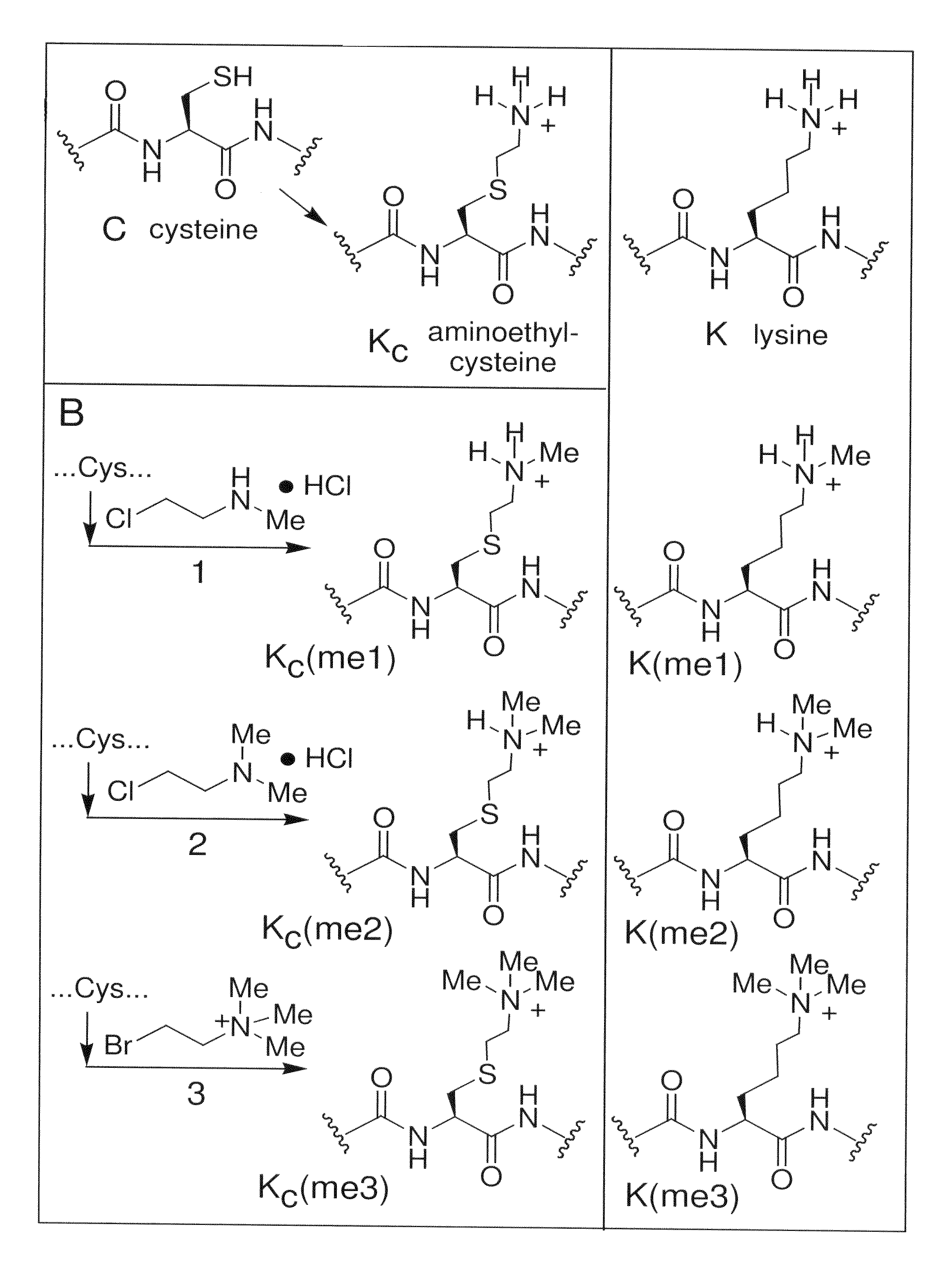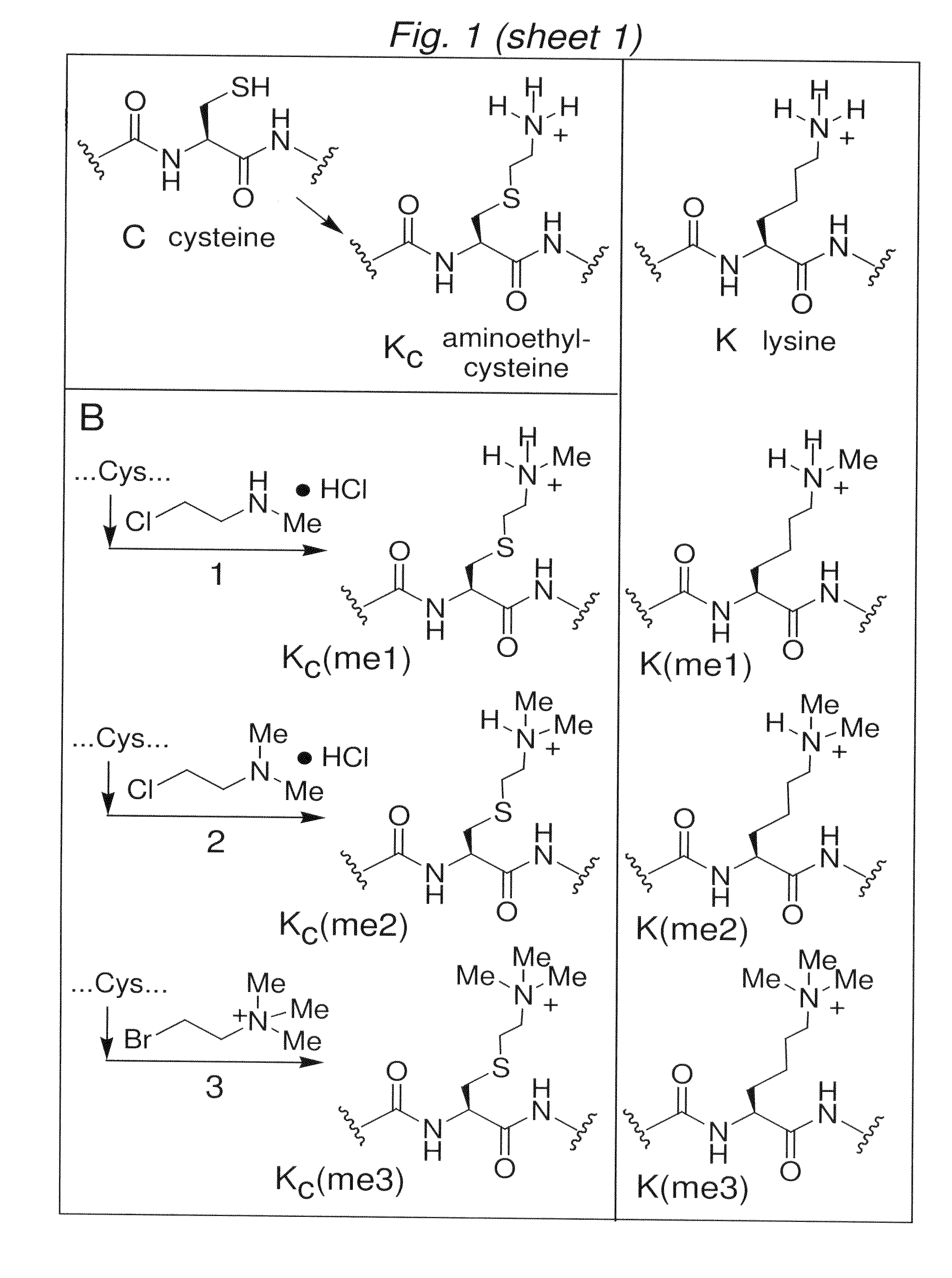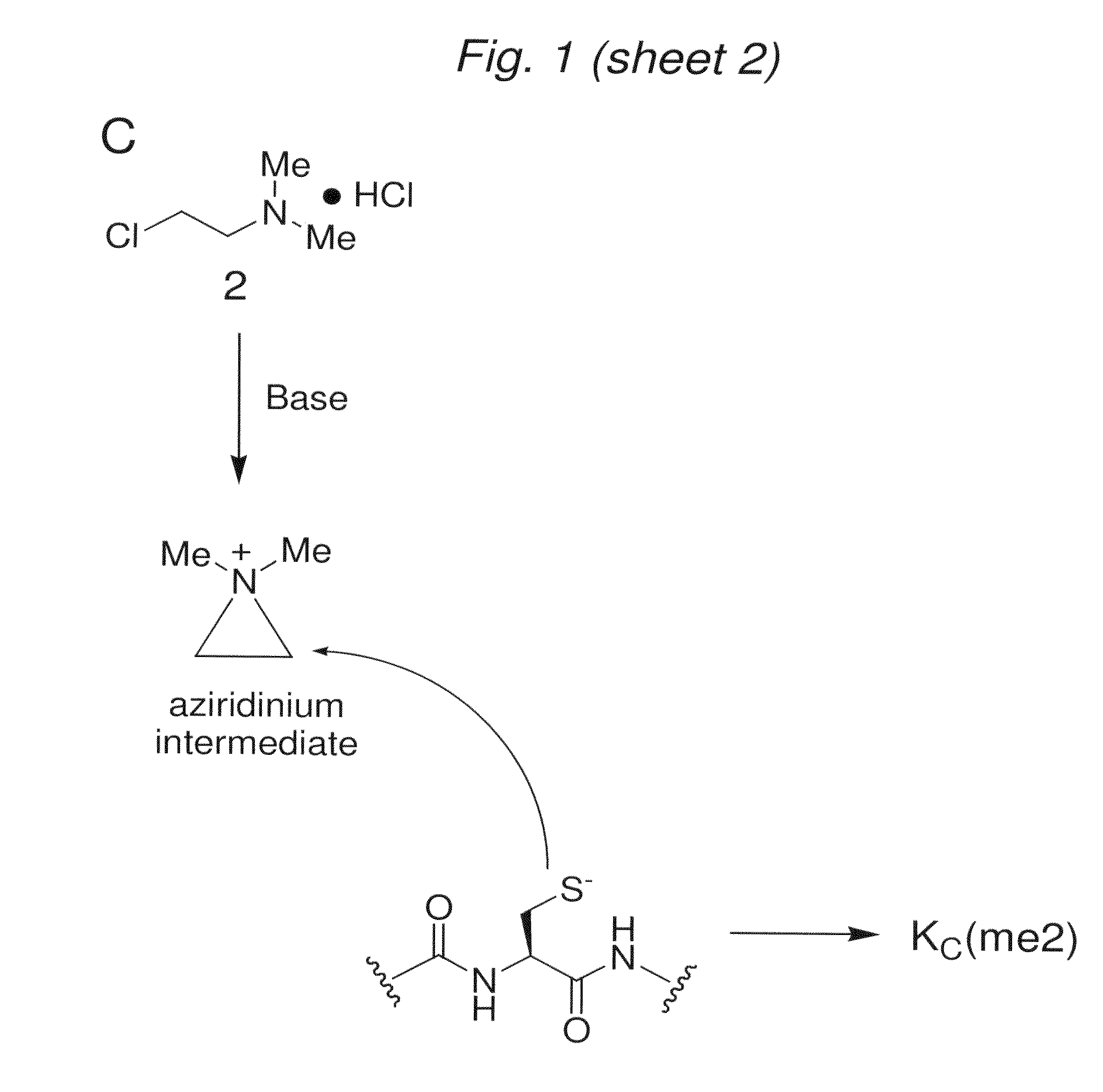Site-specific installation of methyl-lysine analogues into recombinant histones
a technology of methyllysine analogues and recombinant histones, which is applied in the field of site-specific installation of methyllysine analogues into recombinant histones, can solve the problems of limited use of enzymes to methylate lysine residues, uncontrolled degrees of methylation or heterogeneity with respect to site specificity, and limited semisynthesis of modified histones
- Summary
- Abstract
- Description
- Claims
- Application Information
AI Technical Summary
Benefits of technology
Problems solved by technology
Method used
Image
Examples
example 1
Design of Methyl Lysine Analogues
[0127]Aminoethylcysteine has proven useful as an analogue of lysine for chemical rescue and cysteine mapping applications (Kenyon, G. L. and Bruice, T. W., Methods Enzymol, 47:407-430 (1977)). For example, a protein that contains a cysteine can be alkylated with an electophillic ethylamine and the product (aminoethylcysteine, see FIG. 1A) can direct proteolytic cleavage using a lysine-directed protease such as trypsin (for early examples, see Raftery and Cole, 1966, and references therein).
[0128]Aminoethylcysteine is structurally and chemically similar to lysine; substituting the lysine γ-methylene with a sulfide causes only a slight lengthening of the side-chain (˜0.28 Å) and the electron withdrawing effect of the thioether causes only a small increase in the acidity (−1.1 pKa unit) of the ammonium protons (see Gloss and Kirsch, 1995, and references therein). (See, also, FIG. 12.)
[0129]We have discovered that a related reaction would allow the intro...
example 2
Optimization of Conditions to Install Methyl Lysine Analogues into Proteins
[0132]To determine whether the chemistry to install MLAs can produce homogeneous products for biochemical analysis, we used model cysteine-containing peptides to find conditions that promote specificity for cysteine alkylation over other nucleophilic side-chains, minimize variability caused by different sequence contexts and proceed with high conversion. Controlling the pH of the reaction was critical. At pH 8.5 side reactions were observed. However, reactions performed with reagents 1-3 using optimized buffer conditions, reaction time, temperature and concentrations of the alkylating agents afford good conversion (>90%) of cysteine to the desired MLAs in the context of a model peptide (FIG. 2A).
[0133]Extending these conditions to convert cysteine to the desired analogues in the context of full-length histones rather than peptides required increasing the concentration of denaturant (to increase the accessibil...
example 3
Functional Analysis of Methyl Lysine Analogues
[0136]Histone H3 methyl Lys9 analogues were used along with the other core histones to reconstitute histone octamers (FIG. 3A, Coomassie). Not only could Lys9 analogues be incorporated into histone ocatmers but also anti-sera raised against natural mono-, di- and trimethyl Lys9 specifically recognized the appropriate MLAs in western blots (FIG. 3A). The ability of anti-sera to recognize MLAs was not limited to H3 Lys9; similar results were achieved at other positions (H3 Lys4, H3 Lys36), including positions in the nucleosome core (H3 Lys79) and on histone H4 (H4 Lys20 ) as shown in FIGS. 3B and 3C. Despite their exquisite sensitivity to the presence or absence of a single methyl group, these antibody preparations react strongly with the appropriate MLAs, indicating that the MLA side-chains do not constitute a major perturbation to the natural methyl lysine epitopes, leading us to conclude that MLAs and natural methyl lysine residues are ...
PUM
 Login to View More
Login to View More Abstract
Description
Claims
Application Information
 Login to View More
Login to View More - R&D
- Intellectual Property
- Life Sciences
- Materials
- Tech Scout
- Unparalleled Data Quality
- Higher Quality Content
- 60% Fewer Hallucinations
Browse by: Latest US Patents, China's latest patents, Technical Efficacy Thesaurus, Application Domain, Technology Topic, Popular Technical Reports.
© 2025 PatSnap. All rights reserved.Legal|Privacy policy|Modern Slavery Act Transparency Statement|Sitemap|About US| Contact US: help@patsnap.com



